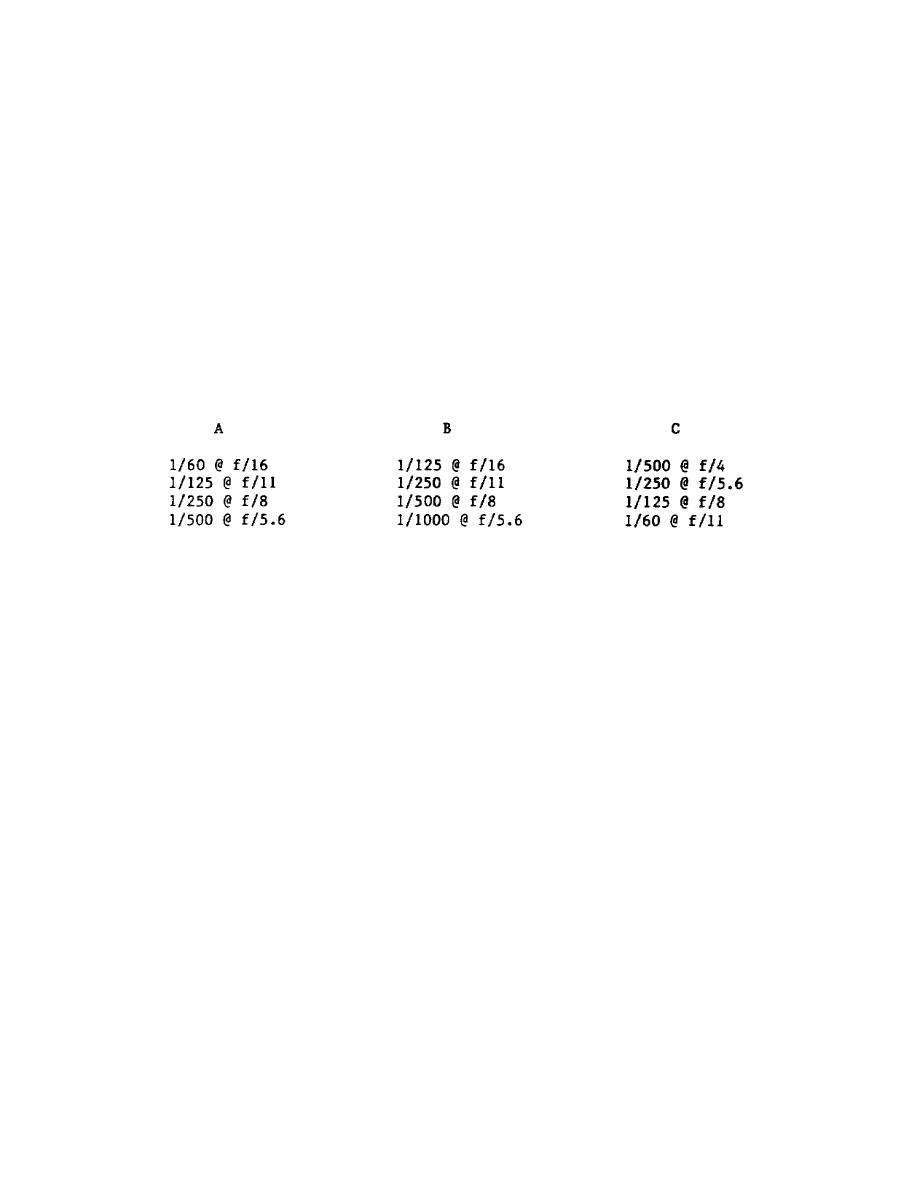
Learning Event 5
CALCULATE SHUTTER SPEED, APERTURE, AND FILM SPEED
1. Shutter and aperture control exposure. The shutter speed controls the
length of time light exposes the film and the aperture controls the
intensity of the light exposing the film.
Both the shutter and aperture
have a doubling and halving effect upon exposure.
2. There are many combinations of shutter speeds and f/stops which will
have the same relative exposure, for example, 1/125 at f/16 has the same
relative exposure as 1/250 at f/11 because 1/250 is one half the duration of
1/125 and allows one half the amount of light and f/11 has twice the
aperture diaphragm area as f/16 and doubles the intensity of light exposing
the film. Thus, the result is an equal exposure of both combinations.
3. Column a, b, and c are examples of different shutter speed and f/stop
combinations which will result in the same exposure.
4. As stated previously, the ISO is a numerical value indicating the film's
degree of sensitivity to light. The more sensitive a film is to light, the
less exposure is required and visa-versa.
5. If you load a camera with film having an ISO of 100 and you are
photographing a subject with an effective exposure of 1/125 at f/8 and then
reloaded the camera with film rated at ISO 50, the effective exposure for
the same subject would have to be changed to 1/60 at f/8 or 1/1255 at f/5.6
because the film rated at ISO 50 is one half as sensitive to light as ISO
100. If the film change was to a film rated at ISO of 200 from ISO of 100,
then the new effective exposure for the same subject would be 1/250 at f/8
or 1/125 at f/11 because the film speed of ISO 200 is twice as sensitive to
light as ISO of 100.
6. The chart below is an example of ISO ratings, shutter speed and f/stop
combinations that will yield the same effective exposure.
FILM SPEED EFFECTIVE EXPOSURE
ISO
25 1/60 @ f/4
or
1/125 @ f/2.8
ISO
50 1/125 @ f/4
or
1/60 @ f/5.6
ISO
100 1/250 @ f/4
or
1/60 @ f/8
ISO
200 1/500 @ f/4
or
1/60 @ f/11
ISO
400 1/1000 @ f/4
or
1/60 @ f/16
39



 Previous Page
Previous Page
